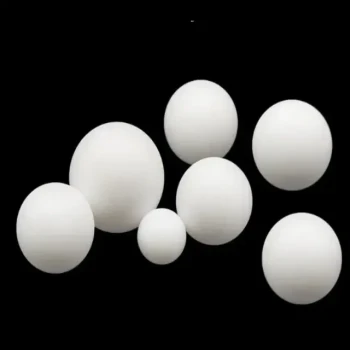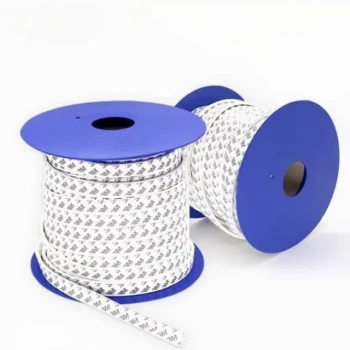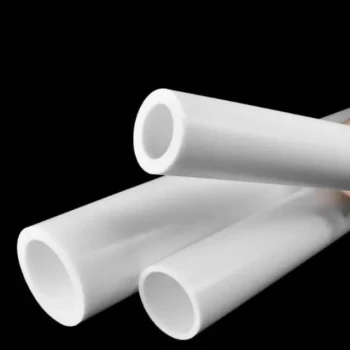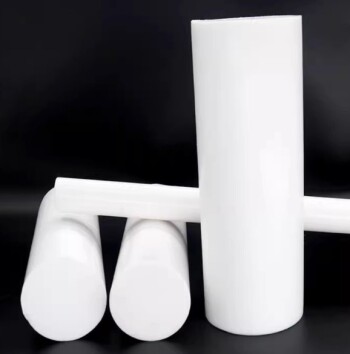Polytetrafluoroethylene (PTFE) is a synthetic fluoropolymer, a high-performance plastic composed of carbon and fluorine atoms. It is produced through a process called free-radical polymerization, where molecules of tetrafluoroethene gas are chemically linked together into long, stable chains. This process creates the famously slick, non-reactive, and heat-resistant material best known by the brand name Teflon.
The essence of PTFE lies in its remarkably strong carbon-fluorine bonds. This simple chemical structure, discovered by accident, creates a material with an unparalleled combination of chemical inertness and an extremely low coefficient of friction.
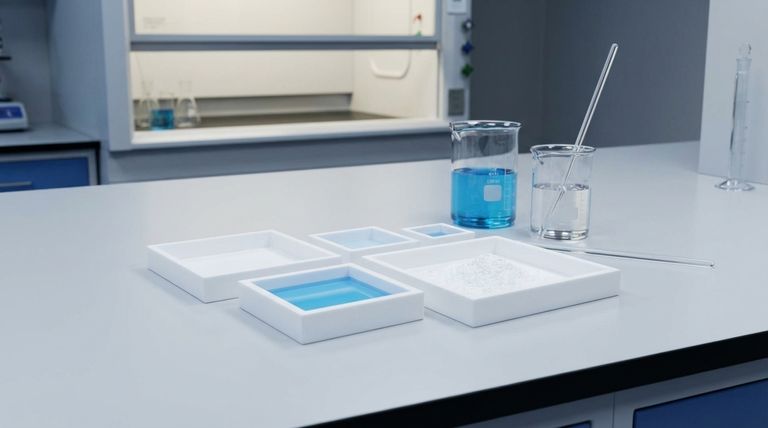
The Accidental Discovery That Changed Materials Science
A Refrigerant Experiment Goes Awry
In 1938, Dr. Roy Plunkett, a chemist at DuPont, was working to create a new, non-toxic refrigerant gas. One of his experiments involved a pressurized cylinder of tetrafluoroethene gas.
From Gas to a Mysterious Solid
He returned to the cylinder to find that while the pressure gauge read empty, the cylinder's weight was unchanged. The gas had not escaped. Upon sawing the metal cylinder open, he discovered it was coated on the inside with a waxy, white, and incredibly slippery solid. The gas molecules had spontaneously polymerized into what we now know as PTFE.
Deconstructing How PTFE is Produced
The Building Block: Tetrafluoroethene (TFE)
The entire process begins with a simple gas called tetrafluoroethene, or TFE. Each molecule of this gas consists of two carbon atoms bonded together and surrounded by four fluorine atoms.
The Polymerization Process
To create PTFE, this TFE gas undergoes polymerization. In this industrial process, pressure and a catalyst (an initiator) are applied to the TFE molecules. This breaks the double bond between the carbon atoms, causing them to link up in a long, repeating chain, forming the stable polymer. The result is the solid PTFE resin.
Why Its Structure Creates Unique Properties
The Strength of the Carbon-Fluorine Bond
The foundational characteristic of PTFE is the bond between its carbon and fluorine atoms. This is one of the strongest single bonds in organic chemistry. This immense strength is what makes PTFE so resistant to heat and attack from nearly all chemicals.
The Protective Fluorine "Sheath"
In the long polymer chain, the carbon backbone is completely surrounded by a dense, tightly-packed sheath of fluorine atoms. This fluorine sheath effectively shields the carbon chain from interacting with other molecules. This is the source of PTFE's famous non-stick quality and extremely low friction; there is very little for other substances to "grab onto."
Common Misconceptions and Limitations
It Is Not Invincible
While incredibly resistant, PTFE is not immune to everything. It can be damaged by highly reactive substances like molten alkali metals and hot fluorine gas itself.
Mechanical Weakness
Compared to many engineering plastics, PTFE is relatively soft and has low tensile strength. It can be prone to "creep," which is the tendency to slowly deform under a sustained load.
High-Temperature Fumes
PTFE is stable across a huge range of temperatures, but it begins to degrade at very high temperatures (above 500°F / 260°C). When it does, it can release fumes that are toxic to inhale. This is not a concern for normal cookware use but is a critical safety factor in industrial applications.
Key Takeaways for Application
The properties of PTFE dictate its use across countless industries. Understanding the connection between its structure and function is key.
- If your primary focus is a non-stick, low-friction surface: The tightly-packed fluorine sheath prevents other molecules from adhering, making it the premier choice for cookware, cable insulation, and low-friction bearings.
- If your primary focus is chemical resistance: The incredibly strong carbon-fluorine bonds create a nearly inert material, perfect for lining pipes, valves, and vessels in corrosive chemical environments.
- If your primary focus is temperature stability: The stable molecular structure allows PTFE to perform reliably in extreme conditions, from cryogenic applications to high-heat industrial processes.
Ultimately, PTFE's simple chemical origin belies its profound and versatile impact on modern technology and everyday life.
Summary Table:
| Property | Why It Matters |
|---|---|
| Chemical Inertness | Resists nearly all corrosive chemicals, ideal for seals and liners. |
| Low Friction | Provides non-stick properties and reduces wear in bearings and components. |
| High-Temperature Stability | Performs reliably from cryogenic temperatures up to 500°F (260°C). |
| Electrical Insulation | Excellent dielectric properties for cable and semiconductor applications. |
Leverage PTFE's Superior Properties for Your Critical Applications
At KINTEK, we specialize in manufacturing precision PTFE components—including seals, liners, and custom labware—for the semiconductor, medical, laboratory, and industrial sectors. Whether you need prototypes or high-volume production, our expertise ensures components that meet your exact specifications for chemical resistance, temperature stability, and low friction.
Ready to enhance your equipment's performance with high-quality PTFE solutions? Contact our team today to discuss your project requirements.
Visual Guide

Related Products
- Custom PTFE Square Trays for Industrial and Laboratory Use
- Custom PTFE Teflon Balls for Advanced Industrial Applications
- Custom PTFE Parts Manufacturer for Teflon Parts and PTFE Tweezers
- Custom PTFE Sealing Tapes for Industrial and High Tech Applications
- Custom PTFE Bottles for Diverse Industrial Applications
People Also Ask
- What is PTFE and what class of plastics does it belong to? A Guide to High-Performance Fluoropolymers
- What is PTFE commonly known as and what type of material is it? A Guide to High-Performance PTFE Properties
- What is Teflon and what is its chemical name? Unpacking the Science of PTFE
- How does PTFE contribute to environmental benefits? Durability, Efficiency, and Contamination Prevention
- How was PTFE discovered and developed? From Lab Accident to Essential High-Performance Polymer

